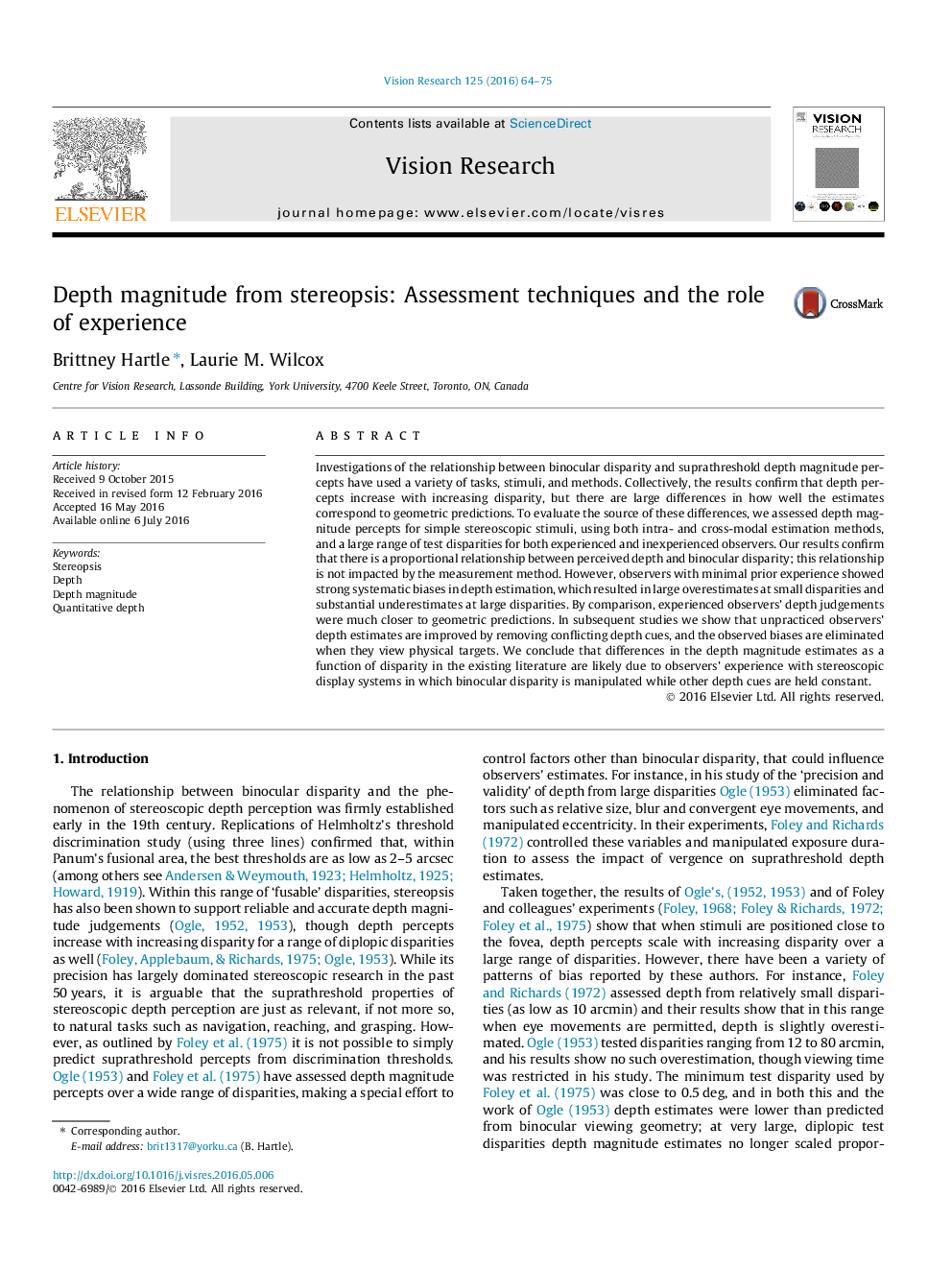| Article ID | Journal | Published Year | Pages | File Type |
|---|---|---|---|---|
| 6203001 | Vision Research | 2016 | 12 Pages |
â¢The measurement methods used here do not impact depth estimates from disparity.â¢Depth estimates for experienced observers consistently follow geometric predictions.â¢Inexperienced observers show systematic biases in perceived depth from disparity.â¢All observers make accurate depth estimates in physical environments.â¢Inexperienced observers' estimates are influenced by the presence of cue conflicts.
Investigations of the relationship between binocular disparity and suprathreshold depth magnitude percepts have used a variety of tasks, stimuli, and methods. Collectively, the results confirm that depth percepts increase with increasing disparity, but there are large differences in how well the estimates correspond to geometric predictions. To evaluate the source of these differences, we assessed depth magnitude percepts for simple stereoscopic stimuli, using both intra- and cross-modal estimation methods, and a large range of test disparities for both experienced and inexperienced observers. Our results confirm that there is a proportional relationship between perceived depth and binocular disparity; this relationship is not impacted by the measurement method. However, observers with minimal prior experience showed strong systematic biases in depth estimation, which resulted in large overestimates at small disparities and substantial underestimates at large disparities. By comparison, experienced observers' depth judgements were much closer to geometric predictions. In subsequent studies we show that unpracticed observers' depth estimates are improved by removing conflicting depth cues, and the observed biases are eliminated when they view physical targets. We conclude that differences in the depth magnitude estimates as a function of disparity in the existing literature are likely due to observers' experience with stereoscopic display systems in which binocular disparity is manipulated while other depth cues are held constant.
